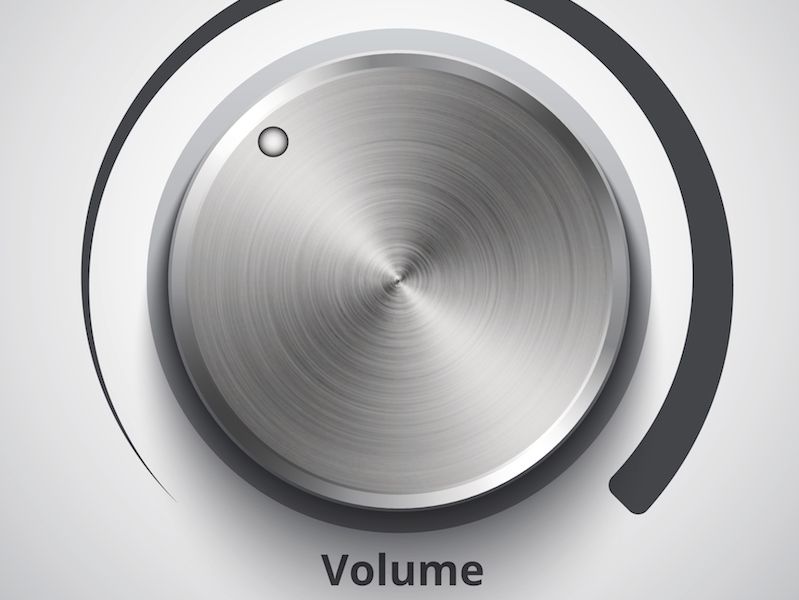Have you ever gone to the beach and noticed one of those “Beware of Shark” warnings? It’s not hard to understand that you should never ignore a caution like that. You may even reconsider swimming at all with a sign like that (if the sign is written in big red letters that’s particularly true). For some reason, though, it’s difficult for people to pay attention to warnings concerning their hearing in the same way.
Current research has found that millions of people neglect warning signs regarding their hearing (this research specifically considered populations in the United Kingdom, but there’s little doubt the problem is more global than that). Knowledge is a huge part of the problem. It’s pretty intuitive to be scared of sharks. But the majority of individuals don’t have an overt fear of loud noises. And the real question is, what’s too loud?
We’re Surrounded by Hazardously Loud Sounds
It’s not only the rock concerts or the machine shop floors that present dangers to your ears (although both of those situations are, without a doubt, dangerous to your hearing). There are potential risks with many common sounds. That’s because exposure time is as hazardous as the volume. Even low-level sounds, such as dense city traffic, can be dangerous to your ears if you are exposed for more than two hours.
Generally, here’s an approximate outline of when loud becomes too loud:
- 30 dB: This is the sound level you would expect of normal conversation. At this volume, there won’t be any limit to how long you can confidently be exposed.
- 80 – 85 dB: This is the sound level of heavy traffic, lawn equipment, or an air conditioner. After around two hours this level of sound becomes harmful.
- 90 – 95 dB: Think of the noisiness of a motorcycle. This level of exposure becomes harmful in as little as 50 minutes of exposure.
- 100 dB: This is the amount of sound you might experience from a mid-size sports event or an approaching subway train (depending on the city, of course). This level of sound can become hazardous after 15 minutes of exposure.
- 110 dB: Do you ever crank the volume on your earpods up as high as it will go? That’s usually around this volume on most smartphones. 5 minutes will be enough to be unsafe at this level.
- 120 dB and over: Instant pain and injury can happen at or above this volume (think about an arena sized sporting event or rock show).
How Loud is 85 Decibels?
Generally, you should regard anything 85 dB or above as putting your hearing in danger. But it can be difficult to recognize how loud 85 dB is and that’s the issue. A shark is a tangible thing but sound is not so tangible.
And that’s one of the reasons why hearing cautions often go ignored, when the sound environment isn’t loud enough to cause pain, this is especially true. There are a couple of possible solutions to this:
- Get an app: There isn’t an app that will directly protect your ears. But there are several sound level metering apps. It’s hard to judge what 85 dB feels like so your hearing can be damaged without you even knowing it. The solution, then, is to have this app open and track the noise levels around you. This can help you establish a sense for when you’re entering the “danger zone” (and you will also discern immediately when things are getting too noisy).
- Sufficient training and signage: This particularly pertains to the workplace. Signage and training can help reinforce the real dangers of hearing loss (and the advantages of protecting your hearing). Also, just how noisy your workspace is, can be made clear by signage. Training can tell employees when hearing protection is necessary or suggested.
If You’re in Doubt, Protect Yourself
No signage or app will ever be 100%. So make the effort to protect your hearing if you have any doubt. Over a long enough period of time, noise damage will almost certainly create hearing problems. And these days, it’s never been easier to injure your ears (all you need to do is turn your headphone volume up a little too high).
If you’re listening to headphones all day, you should not increase the volume past the half way. If you keep cranking it up to hear your music over background sound you should find different headphones that can block out noise.
So when volume becomes too loud, it’s essential to accept it. Increasing your own understanding and awareness is the answer if you want to do that. It’s not difficult to reduce your exposure or at least wear hearing protection. That begins with a little knowledge of when you should do it.
That should be easier these days, too. That’s even more relevant now that you have some insight.
Think you might have hearing loss? Schedule a test.
[blogcta]

